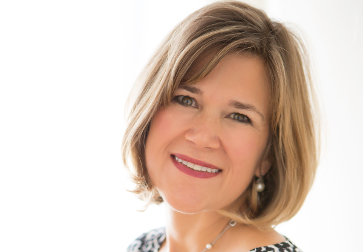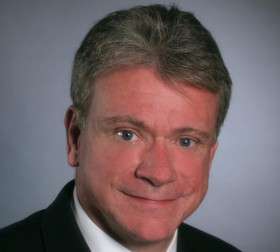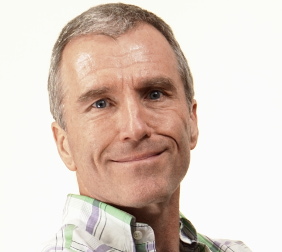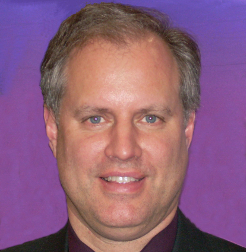WHITE PLAINS, N.Y.—The Society of Motion Pictures and Television Engineers this week announced details of its Vision 2020 strategic plan, which include expanding membership to other industries and segments that rely on motion imaging, such as gaming, corporate video and internet video, and bolstering its membership, education and standards work.

Matt Goldman
In a webinar featuring six members of SMPTE’s leadership team, including society president Matthew Goldman and executive director Barbara Lange, they discussed the organization’s plans for 2018 and beyond. Other presenters during the webinar included Pat Griffis, SMPTE executive vice president; Peter Wharton, vice president of membership; Bruce Devlin, vice president of standards; and Richard Welsh, vice president of education.
INDUSTRY SHIFTS
“The times, they be a changing,” said Goldman, who is also senior vice president, Technology for Television and Media at Ericsson. To meet the challenges of an industry in flux, the organization has reflected on its mission to ensure it is on the path to a successful future, he said.

Barbara Lange
“The board, past presidents, Next Century Fund donors and other invited guests [have] participated in strategic planning that is Vision 2020,” he said. Together, they have made “significant progress” in ensuring SMPTE’s continued relevance and maintaining its fiscal stability, he added. “At the core, of course, is that we want to be recognized as the source for technology and information related to motion imaging…not just in media and entertainment…[but also any]where motion imaging has become a very core method for communicating,” said Lange.
The professional video industry's #1 source for news, trends and product and tech information. Sign up below.
As the “industry shifts and the world changes,” SMPTE must adjust its services and programs accordingly, said Lange. For instance, SMPTE’s educational programs must reflect ongoing industry changes, and its membership efforts must include ways to serve the needs of those who would be interested in SMPTE but live in areas of the world where no “formalized” section exists.

Pat Griffis
Griffis, who is also vice president, of Technology, office of the CTO at Dolby Laboratories, added that SMPTE will pursue new section models, such as virtual sections, to reach underserved areas of the world. Those include Central and South America, Japan and Singapore where there are SMPTE members but no sections, added Wharton, who is also president of Chesapeake Beach, Md., -based consultancy Happy Robotz.
Beyond geography, SMPTE is looking to expand membership by “making sure we are reaching people in other industry areas and broadening our focus,” said Wharton. For example, SMPTE is well-known for its focus on standards and high-level conferences; however, going forward it is seeking to grow its membership at all levels by providing value at all stages of one’s career, especially with students and those in the early stages of their careers, he said. SMPTE is also encouraging its sections to record and stream their meetings not just to section members, but all SMPTE members, he added.
UPDATING THE STANDARDS PROCESS

Bruce Devlin
When it comes to standards, SMPTE is working on tools to make their development and accessibility easier and thus of “greater relevance around the world,” said Lange.
One such tool is a is a new specification model—“in other words, business-driven, lightweight constraints of standards coming from SMPTE,” said Devlin, who also heads up the MrMXF.com consultancy. “The first one of those is being done in partnership with the DPP [Digital Production Partnership],” he said, adding that the specification soon will come out of the SMPTE publication cycle.

Peter Wharton
The new approach to standards, however, hasn’t interrupted the traditional standards-setting work being done by the organization. Over the past two years, SMPTE has published 102 engineering documents –about one per week—and the organization expects a similar number in 2018, Devlin said. “Even though they appear to be a difficult thing to do, and they appear to take a long time, the time scale of developing standards is very much dependent on getting a bunch of really clever people to agree on something.”
As SMPTE strives to become attractive to a broader audience, the focus of the organization’s educational offerings will expand, said Welsh, who is also co-founder and CEO of U.K.-based Sundog Media Toolkit. While the organization will maintain its commitment to strong technical education aimed at professional development, it will also offer educational opportunities intended for those with a business orientation who need to understand where the technology is headed, he said.

Richard Welsh
Welsh added that SMPTE is committed to putting diversity “front and center of what we do” and to expect “more diverse people being speakers and part of the decision-making teams” that help to direct the organization’s educational efforts. He also reminded those attending the webinar that the SMPTE 2018 Annual Technical Conference and Exhibition will be held at a new venue—the Westin Bonaventure in downtown Los Angeles, Oct. 22-25.
Phil Kurz is a contributing editor to TV Tech. He has written about TV and video technology for more than 30 years and served as editor of three leading industry magazines. He earned a Bachelor of Journalism and a Master’s Degree in Journalism from the University of Missouri-Columbia School of Journalism.

